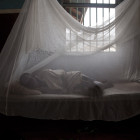
A Look at Girls in the Juvenile Justice System
|
A report released this month takes an in-depth look at how girls are represented in North Carolina's juvenile justice system, how the numbers have shifted over the years and why females are the fastest growing segment of the juvenile justice system despite the overall decrease in juvenile crime. Representing Girls In the Juvenile Justice System, released by the North Carolina Office of the Juvenile Defender, looks at not only the characteristics and risk factors of girls in the juvenile justice system, but also offers several best practices to best serve the unique issues this population faces. Since the early 1990s, due to policy changes, the number of girls in the juvenile justice system has been on the rise. Basically, the increased amount of girls in the juvenile justice system can be credited to the “relabeling of girls’ family conflicts as violent offenses, shifting police practices concerning domestic violence, processing of misdemeanor cases in a gender-biased manner and a misunderstanding of girls’ developmental issues,” according to the report. Currently, it’s estimated that girls make up 30% of youth arrested and 24% of youth serving time in detention centers. Studies show that girls are more likely than boys to be placed in these centers for less serious offenses.









